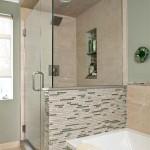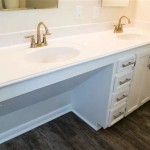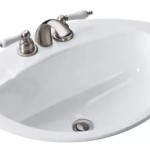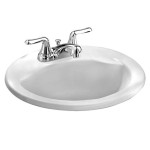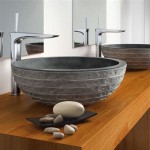Can You Use Normal Paint In Bathrooms? Understanding Suitability and Alternatives
Bathrooms present a unique set of environmental challenges that significantly impact the longevity and appearance of painted surfaces. High humidity, frequent temperature fluctuations, and the presence of moisture from showering, bathing, and sink usage necessitate careful consideration when selecting paint. While the immediate impulse might be to use readily available “normal” or standard paint, a thorough understanding of its performance characteristics in such conditions is crucial.
Standard paints, typically formulated for general interior use, are designed with a specific set of properties in mind. These paints often prioritize ease of application, color variety, and cost-effectiveness for areas like living rooms, bedrooms, and hallways where moisture levels remain comparatively stable. However, the constant exposure to humidity and moisture in a bathroom environment can quickly compromise the integrity of a standard paint finish, leading to a range of problems.
Therefore, the question of whether one *can* use normal paint in bathrooms is not simply a matter of possibility, but rather a matter of suitability and long-term performance. While technically feasible to apply, the resulting outcome might not be desirable or durable, potentially leading to more frequent repainting and higher overall costs in the long run. To accurately assess the suitability of standard paint for bathroom application, a detailed examination of its limitations and the specific demands of the bathroom environment is essential.
Limitations of Standard Paint in Bathrooms
The primary limitation of standard paint in a bathroom setting lies in its inherent vulnerability to moisture. Most standard interior paints are formulated with binders and pigments that, while suitable for dry conditions, lack the necessary resistance to persistent humidity. This lack of resistance manifests in several detrimental ways.
Firstly, standard paint films tend to absorb moisture from the air. Prolonged exposure to high humidity causes the paint film to swell, soften, and lose adhesion to the underlying surface. This can lead to blistering and peeling, especially in areas directly exposed to water spray or condensation. The paint may also become tacky, attracting dust and dirt, which further degrades its appearance.
Secondly, standard paints often lack the necessary resistance to mildew and mold growth. The damp and warm conditions prevalent in bathrooms provide an ideal environment for these microorganisms to thrive. Standard paint films, being porous, can absorb moisture and nutrients, enabling the growth of mold and mildew on and within the paint layer. This not only leads to unsightly staining and discoloration but also poses a potential health hazard, particularly for individuals with allergies or respiratory sensitivities.
Thirdly, standard paints may exhibit poor scrubbability. Bathrooms require frequent cleaning to maintain hygiene and remove soap scum, water spots, and other residues. Standard paints, particularly those with matte or eggshell finishes, are often less durable and more susceptible to damage from rubbing and scrubbing. Repeated cleaning can erode the paint film, leading to fading, scratching, and premature wear.
Finally, the pigmentation of standard paints can be affected by prolonged exposure to moisture. Colors can fade, become blotchy, or even change hue over time, resulting in an uneven and aesthetically unappealing finish. This is especially noticeable with darker or more saturated colors, which tend to be more susceptible to fading.
Understanding Bathroom-Specific Paint Options
Recognizing the limitations of standard paint in bathrooms, paint manufacturers have developed specialized formulations specifically designed to withstand the challenging conditions inherent to these spaces. These bathroom-specific paints typically incorporate several key features that enhance their performance and durability in high-moisture environments.
One of the most important features of bathroom paint is its enhanced moisture resistance. These paints are formulated with specialized binders that create a tighter, less porous film, reducing the absorption of moisture and preventing the swelling, softening, and peeling that can occur with standard paints. Some bathroom paints also contain additives that repel water, further enhancing their moisture resistance.
Another crucial feature is the inclusion of mildewcides and fungicides. These additives inhibit the growth of mold and mildew on the paint film, preventing staining, discoloration, and potential health hazards. The effectiveness of these additives can vary depending on the specific formulation and the environmental conditions, so it is important to choose a paint that is specifically formulated for bathroom use and contains a sufficient concentration of these antimicrobial agents.
Bathroom paints also tend to be more durable and scrubbable than standard paints. They are formulated with higher levels of resins and pigments, creating a tougher, more resilient film that can withstand repeated cleaning without fading, scratching, or wearing away. This makes them ideal for bathrooms, where frequent cleaning is essential for maintaining hygiene and appearance.
Furthermore, many bathroom paints are specifically formulated to resist fading and yellowing. They contain UV inhibitors and other additives that protect the paint film from damage caused by sunlight and other environmental factors, helping to maintain its color and appearance over time. This is particularly important in bathrooms that receive a lot of natural light.
Commonly recommended paints for bathrooms often include acrylic latex paints with a satin or semi-gloss finish. The acrylic latex composition provides good adhesion and flexibility, while the satin or semi-gloss finish offers enhanced moisture resistance and scrubbability compared to matte or eggshell finishes. Epoxy paints, while offering excellent durability and moisture resistance, are less commonly used in residential bathrooms due to their more complicated application process and higher cost.
Preparing the Bathroom Surface for Painting
Regardless of the type of paint chosen, proper surface preparation is essential for achieving a long-lasting and aesthetically pleasing finish in a bathroom. Neglecting this crucial step can compromise the performance of even the most durable bathroom-specific paint formulations.
The first step in surface preparation is thorough cleaning. Remove any existing mildew, mold, soap scum, or other residues from the walls and ceiling using a suitable cleaning solution. A bleach solution is often effective for killing mold and mildew, but it is important to follow safety precautions and wear appropriate protective gear. Rinse the surfaces thoroughly with clean water and allow them to dry completely.
Next, repair any damaged areas, such as cracks, holes, or peeling paint. Fill cracks and holes with a spackling compound or patching plaster, and sand smooth once dry. Scrape away any loose or peeling paint and feather the edges to create a smooth transition. If the existing paint is glossy, it is important to sand it lightly to create a better surface for the new paint to adhere to.
Priming is another crucial step in surface preparation. A primer creates a uniform, sealed surface that promotes adhesion and helps to prevent moisture from penetrating the paint film. Choose a primer that is specifically formulated for bathrooms or high-moisture environments. Apply the primer evenly to all surfaces and allow it to dry completely before painting.
Proper ventilation is also essential during painting. Open windows and doors to allow fresh air to circulate, and use a fan to help dry the paint. This will help to reduce the risk of mold and mildew growth and create a healthier environment.
In summary, while “normal” or standard paint *can* technically be applied in bathrooms, it is generally not recommended due to its inherent limitations in resisting moisture, mold, and frequent cleaning. Bathroom-specific paint formulations offer significantly enhanced performance and durability in these challenging environments. Furthermore, proper surface preparation is crucial for ensuring a long-lasting and aesthetically pleasing finish, regardless of the type of paint chosen.

Which Paint Should I Use In A Bathroom Victoriaplum Com

Best Type Of Paint For Bathrooms 2024 Guide Forbes Home

Which Paint Should I Use In A Bathroom Victoriaplum Com

The Most Durable Paint You Can Use For A Bathroom Sheldon Sons Inc

Should I Use Flat Paint In A Bathroom Williams Painting

Which Paint Should I Use In A Bathroom Victoriaplum Com

Can Bathroom Paint Be Used In A Bedroom Victoriaplum Com

Should I Use Flat Paint In A Bathroom Williams Painting

What Is The Best Paint For Bathroom Walls

What Kind Bathroom Paint Should I Use Ag Williams
Related Posts

